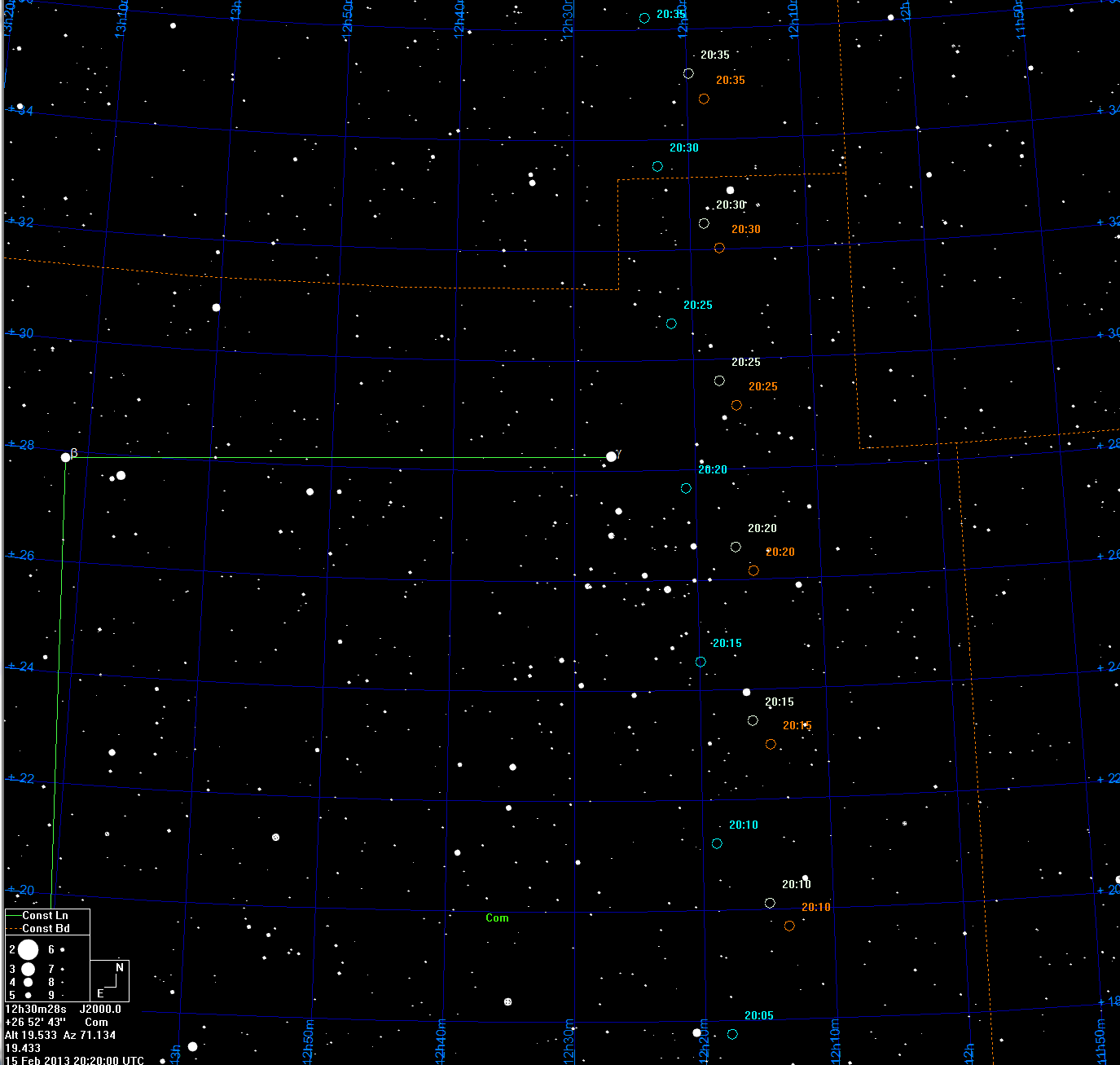Asteroid 2012 DA14 was discovered last year, on February 22nd by astronomers at La Sagra Sky Survey observatory near Granada, Spain. Because it is small in size it was only noticed after it had flown past us, but astronomers knew then it would be back, this time much closer.
How close? 24,000 KM close. As in the distance of some satellites. That means you will be able to see it with binoculars.
Why didn't they notice it before? There are 500,000 of things this size zipping around us in space and it's only 150 feet in size. It turns out this asteroid jumps in and out of our path every year, it even has an orbit similar to ours, a period of 366.24 days. Once astronomers detect it the first time, calculating the path is not so difficult.

In case you missed it last year. Credit:ESA
If you are in Europe, it will have a maximum brightness of about 8 stellar magnitudes when rising above the horizon and will approach Earth from the south. It will rise above the horizon in Virgo, then move northwards left of the constellation Leo. Two hours later it will be seen in the Little Dipper and by morning will have crossed half of the sky but at magnitude 13 you will need a telescope to see it at that point.

CLICK IMAGE FOR LARGER SIZE. Finding Asteroid 2012 DA14 in the Netherlands. Credit: ESA
This isn't going to hit, but what could an asteroid that size do if it hits? Quite a lot, a sobering thought since, as I mentioned, there are 500,000 objects this size to track just close enough to think about. The June 20th, 1908 event at Tuskunga was a 300 foot meteor and it had an explosion bigger than the atomic bomb used at Nagasaki in World War II, thousands of square miles of devastation.
Astronomers look for everything happening out there but a group called B612, founded in 2001 by a former astrononaut wants to 'make an impact' (get it??) just in smaler destructive events - the kind that won't wreck a planet but would wreck cities. They say that the technology to deflect a life-altering asteroid is there right now - more "Armageddon" and less "Deep Impact" if you need disaster movie context - but it needs a devoted monitoring effort. They are raising money to design, build, launch, and operate an infrared space telescope solely for the purpose of tracking the hundreds of thousands of smaller asteroids that are not tracked with current telescopes.

Sentinel proposed field of view. Credit and link: B612
Since we know this goes by us about twice a year, at varying distances, is there anything to worry about? Not for at least the next century but one fun aspect is that we get to see a large experiment in gravitational change in a more manageable way than monitoring the moon or anything really large. 100 years from now the probability of an impact is still only 8.0e-09,which is a 1 in 125,000,000 chance of getting hit. That means it is 99.99999920 % certain that if you are still alive in 2112 to see 2012 DA14 approach Earth, you will also be alive to watch it disappear from view again.
A debated claim is that this kind of event wiped out the dinosaurs - evidence shows extinctions accelerated right after that - and without dead dinosaurs we wouldn't have had the rise of placental mammals like us, so sometimes good things results from bad things. But dinosaurs did not have a space program. Or Bruce Willis. Be sure that if anything world-ending from space is happening any time soon, you will read about it here well in advance.




Comments